- Home
- John Updike
Higher Gossip Page 15
Higher Gossip Read online
Page 15
Scanning the Sixties stories for signs of revolution, we wonder if the grotesque hero of Joyce Carol Oates’s “Where Are You Going, Where Have You Been?”—a misshapen yet irresistible troll out of a youth culture that won’t quit—might be taken as the call of the counterculture, luring the Fifties’ restless Connies out from their cramping domestic security and onto the road. The story is dedicated to Bob Dylan. Fifteen years of civil-rights agitation and selective advancement lie behind the educated, self-pampered narrator of McPherson’s “Gold Coast,” who for a time moved smoothly—“I only had to be myself, which pleased me”—through a multiracial world. And could Mary Ladd Gavell’s airy, melancholy pastiche, “The Rotifer,” leaping so gracefully from the microscopic to the historic to the contemporarily romantic, have been composed ten years earlier, without the examples of Barthelme’s pastiches or Salinger’s interloping authorial voice? This gem was Gavell’s only published story; the managing editor of the magazine Psychiatry, she died in 1967 at the age of forty-eight, and the magazine ran the story as a memorial.
Something of Gavell’s mulling, quizzical approach can be heard in the next decade’s “How to Win,” by Rosellen Brown, and “Roses, Rhododendron,” by Alice Adams. There are the facts—a dysfunctional child, a girlhood friendship—and there is the female mind that views these facts with a certain philosophical élan. This is feminism in literary action, the contemplative end of a continuum that includes this era’s angry confessional memoirs. When Lardner or Parker deployed the first person, it was apt to be an exercise in dramatic irony: we knew more than the crass and innocent narrator. Now the first person is deployed in earnest, for lack of a trustworthy other; the writer and reader are partners in a therapeutic search that will be, we know, inconclusive. Harold Brodkey’s “Verona: A Young Woman Speaks” is an exercise of quite another kind: an attempt to plumb the depths, to portray a bliss at life’s root, to express the never hitherto quite expressed, at a point where family complication and shining white Alps and “miraculously deep” blue shadows converge. If Brodkey sought, through the laborious dissection of sensations, depths, Donald Barthelme and Ann Beattie and Raymond Carver offer surfaces—uninflected dialogue, a bluntly notational (if not, as with Barthelme, hilariously absurdist) manner of description. No writer ever gratefully claimed the title of “minimalist,” yet the term “minimalism,” borrowed from the art world, did identify something new, or something new since the Thirties’ rampant imitation of Hemingway—a withdrawal of authorial guidance, an existential determination to let things speak out of their own silence. Such writing expressed post-Vietnam burnout much as Hemingway spoke for the disillusioned mood after World War I. The reader’s hunger for meaning and gloire is put on starvation rations; the nullity of quiddity is matched by the banality of normal conversation. Beattie was the first to put forth the no-frills, somewhat faux-naïve style (Martha Foley shunned her early efforts, leaving us with only the later, not entirely typical, but still dispassionate “Janus”); Carver (“Where I’m Calling From”) became the darling of the college crowd, and Barthelme (“A City of Churches”) of the New York intelligentsia. English style needs a periodic chastening, and minimalism gave college instructors in the proliferating writing courses a teachable ideal: keep it clean, keep it concrete. As William Carlos Williams immortally put it, “No ideas but in things.” The dictum is congenial, bespeaking no-nonsense American pragmatism.
But ideas exist in human heads, and the more baroque possibilities of language, conceptualization, and a companionable authorial voice will not go away. Who would deny “A Silver Dish” its tumbling richness, as with the usual Bellovian superabundance of characterization, a kind of urban hurry and crowding, the master pursues his usual theme, the vagaries of human vitality? “That was how he was”—the story’s last sentence shrugs in plain wonder at life, its barbarities and family feeling. “Do they still have such winter storms in Chicago as they used to have?” An epic trolley-car ride in a blizzard serves as an image of our brave human pertinacity. Cynthia Ozick is a baroque artist of the new generation: her brief, desolating “The Shawl,” which comes as close to the reality of the death camps as imagination can take us, should be read in conjunction with its expansive American sequel “Rosa,” set in a surreal Florida of Jewish retirees. My own story, “Gesturing,” seemed of the several available to offer the most graceful weave, mingling the image of a defenestrating skyscraper with those from a somewhat gaily collapsing marriage. Marriages and relationships, as the century progresses, are on ever shakier ground, with fewer and fewer communal alternates like the band of farm wives in “A Jury of Her Peers” or the Communist brotherhood of “Bright and Morning Star.” Domestic life, with piped-in entertainment and takeout meals, is our scarcely escapable mode of living, though the urge to escape is widely chronicled.
The health of the short story? Its champions claim that as many stories are published as ever. But there is a difference, in a consumer society, between something we have to have and something that is nice to have around. Few magazines still pay the kind of fees that kept Scott Fitzgerald in champagne. If The New Yorker published eleven of my last twenty selections, one reason may be that it had less and less competition as a market. Whatever statistics show, my firm impression is that in my lifetime the importance of short fiction as a news-bearing medium—bringing Americans news of how they live, and why—has diminished. In reaction to this diminishment, short-story writers, called upon less often, seem to be trying to get more and more into each opportunity to perform. Alice Munro, ever more a panoramist, gets into “Meneseteung” an entire late-Victorian Ontario town, and a woman’s entire life with it. Susan Sontag gets an entire microcosm of New York’s artistic crowd into “The Way We Live Now,” as a circle of friends reacts with gales of gossip, like a hive of stirred-up bees, to the blighting of one of their number by a mysterious disease that, though unnamed, must be AIDS. Tim O’Brien gets the Vietnam War, its soldiers and their materiel, into “The Things They Carried”; O’Brien’s plain, itemizing style bears a trace of minimalism, but the scope of his topic, as First Lieutenant Jimmy Cross learns to “dispense with love,” moves him into maximal territory.
In a short-story world that has lost many potential practitioners to the rewards of television sitcoms and the gambler’s odds of the novel, Lorrie Moore and Thom Jones have emerged as strong voices, at home in a medium length that gives them space to express (not without some gaudy gallows humor) the smoldering rage of the radically discontented female and of the barely tamed, battle-loving male, respectively. The image that ends “You’re Ugly, Too”—the heroine’s nearly consummated desire to push over the edge of a skyscraper a man dressed, in a marked-up body stocking, as a naked woman—holds worlds of conflicted contemporary female feeling. Jones, a celebrant of pugilists, soldiers, and men on pills, in “I Want to Live!” tells in clairvoyant, appalling detail of a woman’s descent, medicine by medicine, into the last stages of cancer. In Alice Elliott Dark’s “In the Gloaming,” a mother tends her son as he dies of AIDS, and in doing so reclaims the maternal bond; few of these stories are more quietly modulated and more moving than this one.
A quality of meltdown pervades the last selections here, which may re-flect a fin-de-siècle desperation—a fear that our options are exhausted—or may reflect my own difficulties in choosing them. “Proper Library,” by Carolyn Ferrell, gives us one of those shifting, precarious black households of such concern to legislators and social workers and moralists, and from the viewpoint of an especially unpromising member of it, a none-too-sharp-witted boy coping with homosexual desires. Yet a sense of human connection and striving comes through: “Please give me a chance.” The hero of Gish Jen’s “Birthmates” belongs to a group, Asian-Americans, that has lately found its English voice. He is near the end of his rope, and being in the thick of the computer revolution doesn’t help him make a connection where it counts. “Soon,” by Pam Durban, takes us back to the turn of the century and
a botched operation on a little girl’s eyes, and beyond that deep into the previous century, when one of those propertied Protestant lines established its stake in the New World; now that stake is mostly memory in an old woman’s mind. And Annie Proulx’s “The Half-Skinned Steer,” taken from The Best American Short Stories 1998, revisits the West, the West that has seemed to this country the essence of itself. An elderly former rancher finds it empty and murderous. I would have liked to finish this volume with a choice less dark, with an image less cruel and baleful than that of a half-skinned steer, but the American experience, story after story insisted, has been brutal and hard.2 The continent has demanded a price from its takers, let alone from those who surrendered it. I regret that no story about Native Americans could be worked into the table of contents; the closest was James Ferry’s “Dancing Ducks and Talking Anus,” updating a cult of pain that was here before the white man.
As I picked my way through the selecting, I was always alert for stories that showed what William Dean Howells called “the more smiling aspects of life, which are the more American.” A number of lighter stories I had thought of including—“The Girl with Flaxen Hair,” by Manuel Komroff; “Your Place Is Empty,” by Anne Tyler—had to yield to the pressure of weightier or more aggressive competitors. But one story that did survive—and the only one of my final selection not yet mentioned—is the delicious trifle “Wild Plums,” by Grace Stone Coates, published in The Frontier in 1929. In it, a child tugs against her parents’ puritanical injunctions, hardened by immigrant caution and rural class-consciousness. The obedient child, it seems, is being barred from the experience of life itself. A veteran short-story reader dreads the worst, rendered with some dying fall and bitter moral. But the outcome is in fact like “wild honey, holding the warmth of sand that sun had fingered, and the mystery of water under leaning boughs.” A story exceedingly simple, and unexpectedly benign, but not false for that, nor less American than the rest.
1For reasons that can only be conjectured, the book version was given, when published by Putnam in 1964, the truncated and vague title of The Defense. This essay was fashioned for the Penguin reprint of 1994, which restored the full and exact title, descriptive of a chess ploy.
2To take the century down to the wire, a story from the 1999 selection was added to the paperback edition. Pam Houston’s “The Best Girlfriend You Never Had” depicts a circle of friends drifting toward the millennium unfulfilled, wanting love, wanting more. The narrating heroine, like the protagonists of the first tales in this anthology, is an immigrant, crossing not the Atlantic but the well-worn and weary continent, toward San Francisco and “something like a real life.” Out of dreams, reality—and vice versa.
WORKS AND DAYS
The Changeling
EDITH WHARTON, by Hermione Lee. 869 pp. Knopf, 2007.
The life of Edith Wharton is not an inspiriting rags-to-riches saga, nor is it a cautionary tale of riches to rags—riches to riches, rather. Born Edith Newbold Jones, in January of 1862, into one of the leading families of New York—the phrase “keeping up with the Joneses” is said to have originated with reference to her great-aunts Mary and Rebecca Jones, who shocked the rest of their staid society by building a mansion north of Fifty-seventh Street, unthinkably uptown in the nineteenth century—the author maintained multiple establishments and travelled in the highest style, with a host of servants, augmenting her several inheritances by writing best-selling fiction. In the Depression year of 1936, when two thousand dollars was a good annual income, her writing earned her $130,000, much of it from plays adapted from her works. Yet her well-padded, auspiciously sponsored life was not an easy one. The aristocratic social set into which she was born expected its women to be ornamental, well-sheltered, intellectually idle agents of their interwoven clans, whereas Edith was an awkward, red-haired bookworm and dreamer, teased by her two older brothers about her big hands and feet and out of sympathy with her intensely conventional mother, née Lucretia Stevens Rhinelander—a mother-daughter disharmony that rankled in Edith’s fiction to the end. She felt like a changeling, writing, in a last, unfinished effort of autobiography, “Life and I,” that her parents “were beginning to regard me with fear, like some pale predestined child who disappears at night to dance with ‘the little people.’ ”
In truth, some of her imaginative activity was alarming, as she describes it; from the age of four or five she would march up and down the house with a book in hand, pretending to read aloud words that she concocted in an “ ‘ecstasy’ of invention.” In “Life and I,” she writes of “the rapture of finding myself again in my own rich world of dreams” and of “the ecstasy which transported my little body.” Her mother disapproved and attempted to distract her with suitable playmates; her father’s library was the site of her reading pleasure, as she lay stretched out on the rug. George Frederic Jones had graduated from Columbia College, sat on charitable boards, and inherited enough money to keep up (just barely) with his wife’s expenditures. Thrift and a dip in the family fortune prompted him to move the family to Italy and France, with their dollar-friendly economies, between 1866 and 1872; Edith returned, at the age of ten, knowing French, Italian, and German, and with a lifelong love of Europe.
In 1881, the family went again to Europe, this time for the father’s health; he and Edith saw sights in Italy with Ruskin’s writing as their guide. But George Frederic Jones died the following year, in Cannes, at the age of sixty-one, when Edith was twenty. She gave him credit for her bookish, culturally voracious side, though in her memoir, A Backward Glance, she credits her mother with arranging the private printing of her first book, Verses, when Edith was sixteen. Others remembered it as her father’s idea, and on her deathbed she assigned her father credit. In 1905, when The House of Mirth was published, to great success and acclaim, she wrote to a friend, “I often think of Papa, and wish he could have been here to encourage me with my work.” Yet, had he lived, her unhappy married life, and her eventual blooming into one of the twentieth century’s finest American writers, might well have taken other turns, to posterity’s loss. The upper crust builds thick inhibitions around its would-be writers; a live father and a more compatible husband might have kept Wharton’s rather dour, frequently satiric genius sealed in a carapace of good manners and amateurish diffidence.
As Wharton’s reputation gradually emerged, after her death, in 1937, from under the cloud of her late, commercially successful but critically denigrated novels and the impression they reinforced of a facile, popular “lady novelist,” she has not lacked for biographical and critical attention. Her literary executor, Gaillard Lapsley, a conservative Cambridge historian, sold her manuscripts and letters to Yale, embargoing “anything of a biographical sort” for thirty years. However, in the mid-1940s he invited Percy Lubbock, another Cambridge scholar whom Wharton had met through Henry James, to compose a memoir of her, which to some other of her acquaintances seemed a poor caricature. The embargo was lifted in 1968, and Louis Auchincloss’s friendly, elegantly illustrated brief biography, Edith Wharton: A Woman in Her Time, followed, in 1971. As early as 1966, a number of eminent American writers, including Edmund Wilson, Leon Edel, and Alfred Kazin, had been considered by the custodians of the Wharton lode for the authorized biography; the Yale professor R. W. B. Lewis was chosen. His Edith Wharton: A Biography came out in 1975, winning the Pulitzer Prize, and it remains, more than thirty years later, the gold standard—the Wharton biography that most people have read. Now an equally long and territorially similar biography, simply titled Edith Wharton, has been produced by Hermione Lee, the first female Goldsmiths’ Professor of English Literature at Oxford and the author of book-length studies of Elizabeth Bowen, Willa Cather, and Philip Roth, and of a greatly admired, nearly nine-hundred-page biography of Virginia Woolf. The reader peruses her biography of Wharton, watchful for the ways in which it differs from, and improves on, Lewis’s.
Lee tells us that her Wharton “makes use of the recent publication
of her letters to Léon Bélugou and Louis Bromfield, draws on a large scatter of unpublished letters … and follows her trail more closely in France, Italy, and England.” These are real additions to the record, but nothing on the sensational order of the revelations that Lewis’s biography contained: an account of Wharton’s passionate affair, from 1908 to 1910, with the hitherto obscure journalist Morton Fullerton; the publication, in an appendix, of an enthusiastically pornographic fragment of an unfinished story titled “Beatrice Palmato”; and the inclusion, complete, in Lewis’s text of a long, long-lined poem, “Terminus,” addressed to Fullerton in the hot wake of his embraces in the Charing Cross Hotel.
Lewis, surveying his task in a prefatory chapter, accentuates the positive:
If Edith Wharton did look forward rather fearfully to being given biographical treatment, she also took pains to see that the biographer would have at his disposal as complete a record as possible.… [She] destroyed relatively little and destroyed selectively—most notably, the letters she had written Walter Van Renssellaer Berry and the majority of letters Berry had written to her over the years. She left behind, meanwhile, a number of extraordinarily revealing documents: diaries, unpublished poems, fragments of autobiography, unfinished stories, which, to speak personally, shook to pieces most of the preconceptions with which I came to this work.

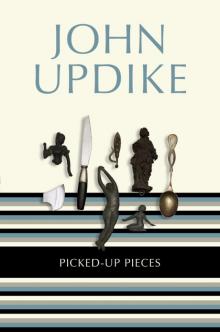 Picked-Up Pieces: Essays
Picked-Up Pieces: Essays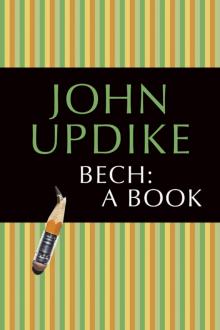 Bech: A Book
Bech: A Book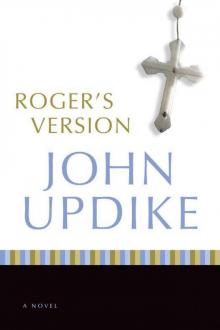 Roger's Version: A Novel
Roger's Version: A Novel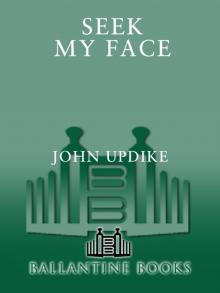 Seek My Face
Seek My Face The Carpentered Hen
The Carpentered Hen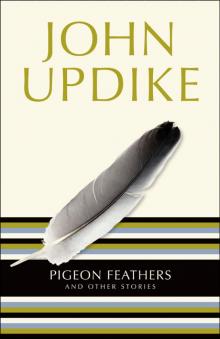 Pigeon Feathers: And Other Stories
Pigeon Feathers: And Other Stories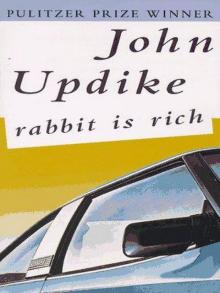 Rabbit Is Rich
Rabbit Is Rich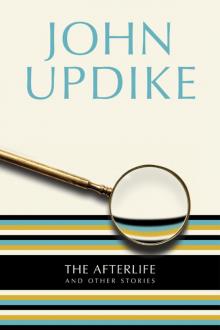 The Afterlife: And Other Stories
The Afterlife: And Other Stories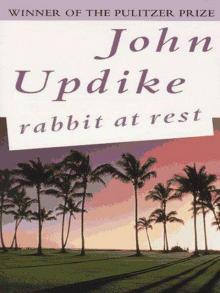 Rabbit at Rest
Rabbit at Rest The Witches of Eastwick
The Witches of Eastwick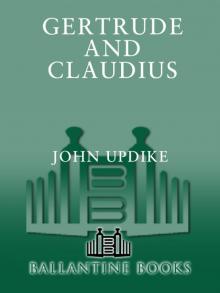 Gertrude and Claudius
Gertrude and Claudius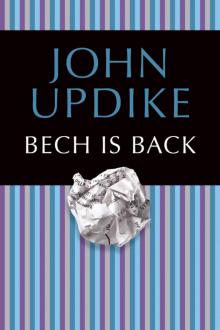 Bech Is Back
Bech Is Back Hub Fans Bid Kid Adieu: John Updike on Ted Williams
Hub Fans Bid Kid Adieu: John Updike on Ted Williams Marry Me: A Romance
Marry Me: A Romance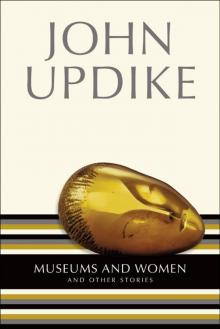 Museums and Women: And Other Stories
Museums and Women: And Other Stories My Father's Tears and Other Stories
My Father's Tears and Other Stories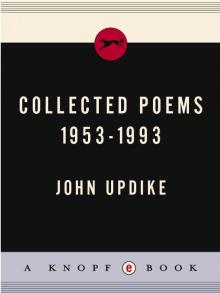 Collected Poems, 1953-1993
Collected Poems, 1953-1993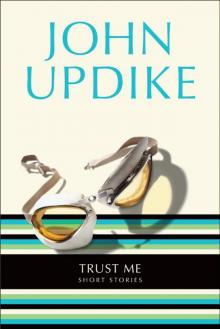 Trust Me: Short Stories
Trust Me: Short Stories Odd Jobs: Essays and Criticism
Odd Jobs: Essays and Criticism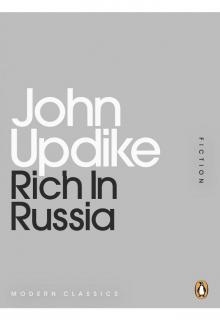 Rich in Russia
Rich in Russia Higher Gossip: Essays and Criticism
Higher Gossip: Essays and Criticism The Widows of Eastwick
The Widows of Eastwick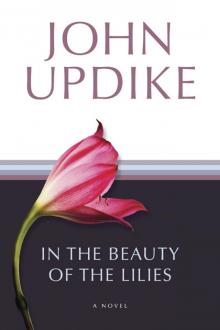 In the Beauty of the Lilies
In the Beauty of the Lilies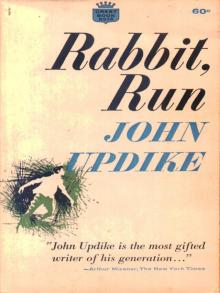 Rabbit, Run
Rabbit, Run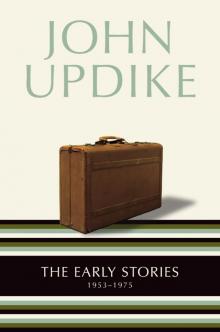 The Early Stories: 1953-1975
The Early Stories: 1953-1975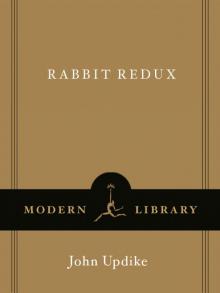 Rabbit Redux
Rabbit Redux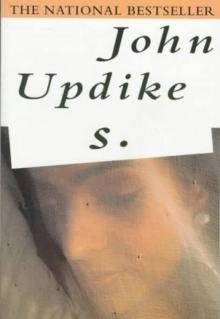 S.
S.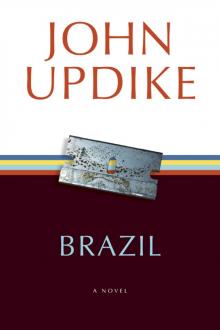 Brazil
Brazil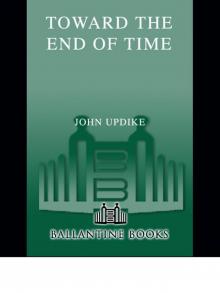 Toward the End of Time
Toward the End of Time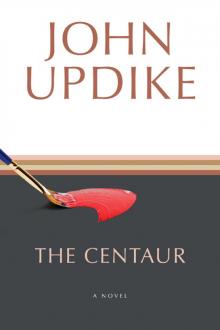 The Centaur: A Novel
The Centaur: A Novel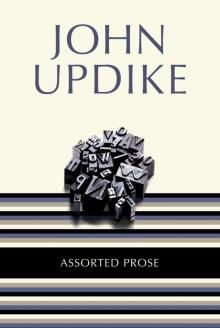 Assorted Prose
Assorted Prose Memories of the Ford Administration
Memories of the Ford Administration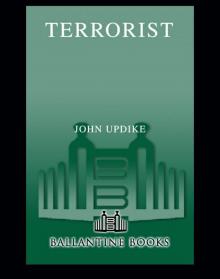 Terrorist
Terrorist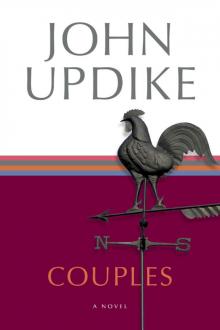 Couples: A Novel
Couples: A Novel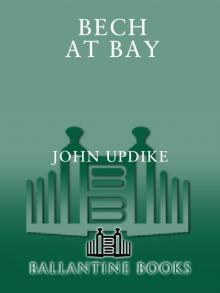 Bech at Bay
Bech at Bay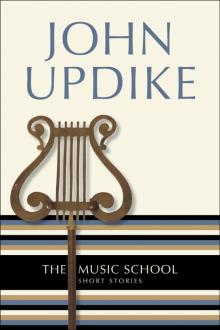 The Music School: Short Stories
The Music School: Short Stories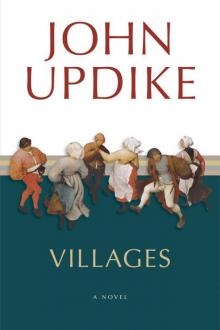 Villages
Villages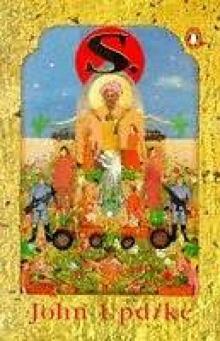 S
S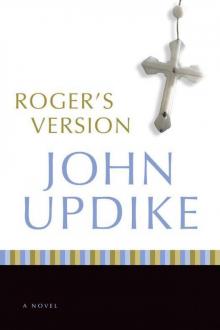 Roger's Version
Roger's Version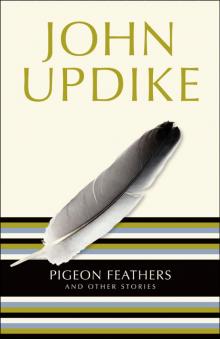 Pigeon Feathers
Pigeon Feathers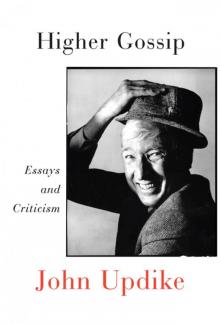 Higher Gossip
Higher Gossip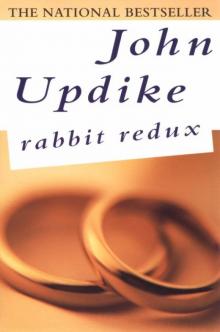 Rabbit Redux r-2
Rabbit Redux r-2 Memories of the Ford Administration: A Novel
Memories of the Ford Administration: A Novel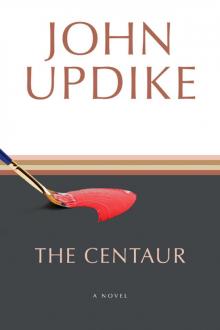 The Centaur
The Centaur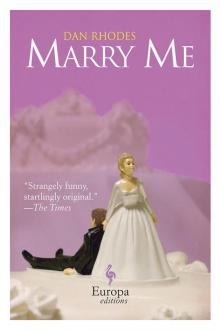 Marry Me
Marry Me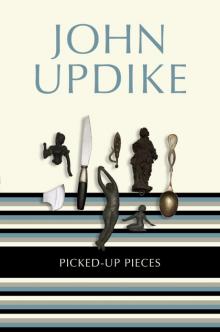 Picked-Up Pieces
Picked-Up Pieces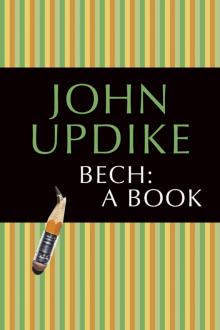 Bech
Bech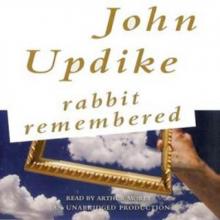 Rabbit Remembered
Rabbit Remembered Trust Me
Trust Me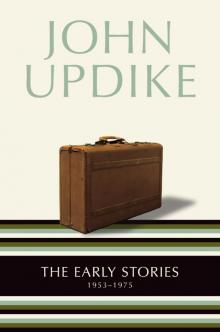 The Early Stories
The Early Stories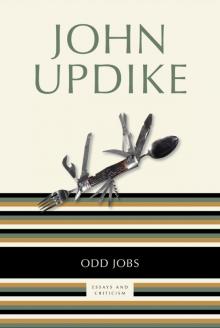 Odd Jobs
Odd Jobs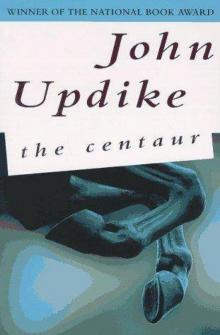 The Centaurus
The Centaurus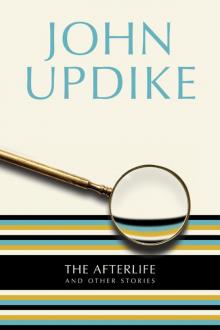 The Afterlife
The Afterlife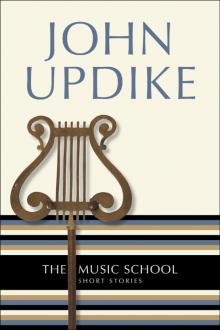 The Music School
The Music School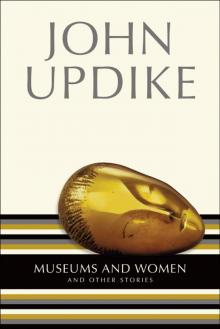 Museums and Women
Museums and Women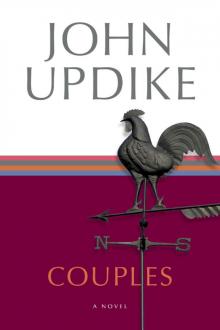 Couples
Couples